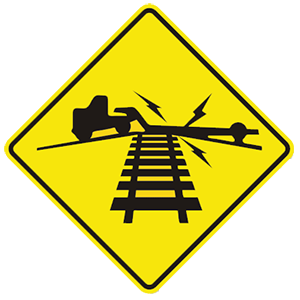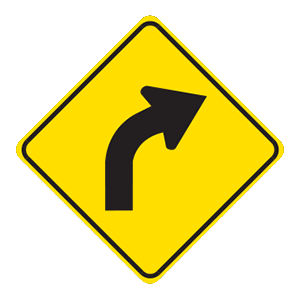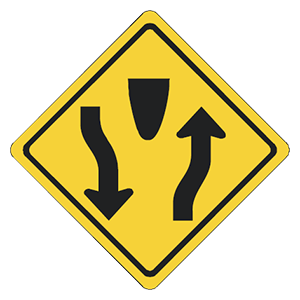2025 Nebraska Permit Test 10
The following questions are from real DMV written tests. These are some of the actual permit questions you will face in Nebraska. Each permit practice test question has three answer choices. Select one answer for each question and select "grade this section." You can find this button at the bottom of the drivers license quiz. For a complete list of questions and answers for Nebraska please visit https://cheat-sheets.dmv-written-test.com/en/nebraska/car.
Number of Tests
Number of Question
Passing Score
9. Fines for speeding are ____ in work zones.
Explanation
Fines for moving traffic violations are doubled in work zones where workers are present, as well as in school zones during indicated hours. Always drive with caution when near children, workers, and other pedestrians.
11. This road sign means:

Explanation
This sign indicates a low ground railroad crossing. Where this sign is present, railroad tracks cross the road at a steep slope and the bottom of low vehicles may drag or get caught on the tracks.
12. A bicyclist who doesn’t obey traffic laws:
Explanation
All bicyclists have the same rights, duties, and responsibilities as drivers of motor vehicles. Motorists and bicyclists who do not obey traffic laws can be ticketed.
13. Sudden wind gusts on highways:
Explanation
While it can create special problems for large vehicles, strong wind can cause problems for all drivers. Wind can lower visibility by blowing dirt and dust into the roadway, but it can sometimes also physically move a vehicle.
14. When you are being tailgated:
Explanation
If you are being tailgated by another driver and there is a right lane, move over to the right. If there is no right lane, wait until the road ahead is clear and then reduce your speed slowly. This will encourage the tailgater to drive around you. Never slow down abruptly as this will only increase the risk of your vehicle being hit from behind.
15. As you approach an intersection with a flashing yellow light:
Explanation
A flashing yellow light means that you should slow down, check for cross traffic, and proceed with caution.
16. This sign means:

Explanation
Warning signs prepare drivers for upcoming road conditions and hazards and are usually yellow with black markings. This sign alerts drivers to an upcoming curve in the road.
Ranked by best match

